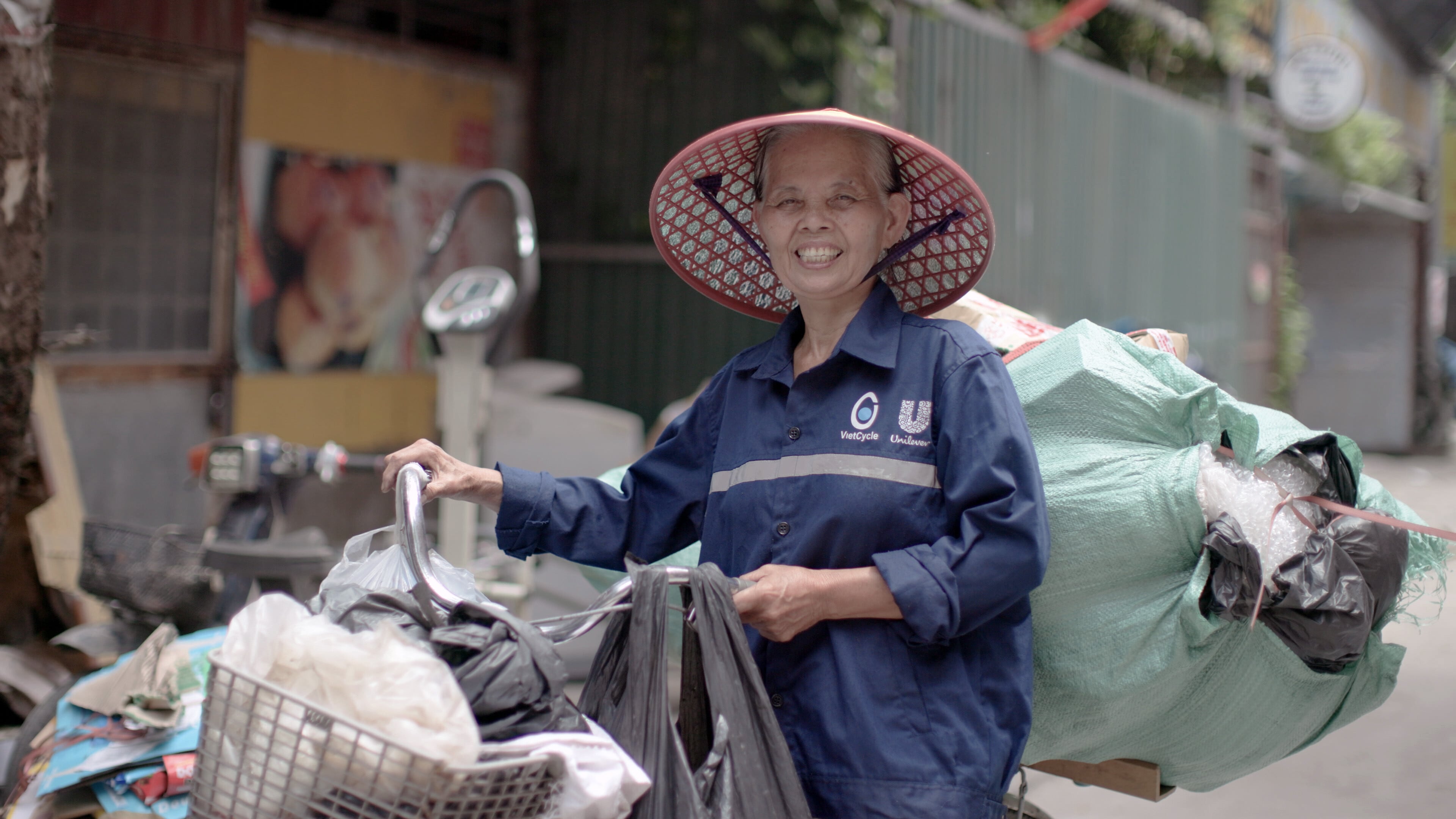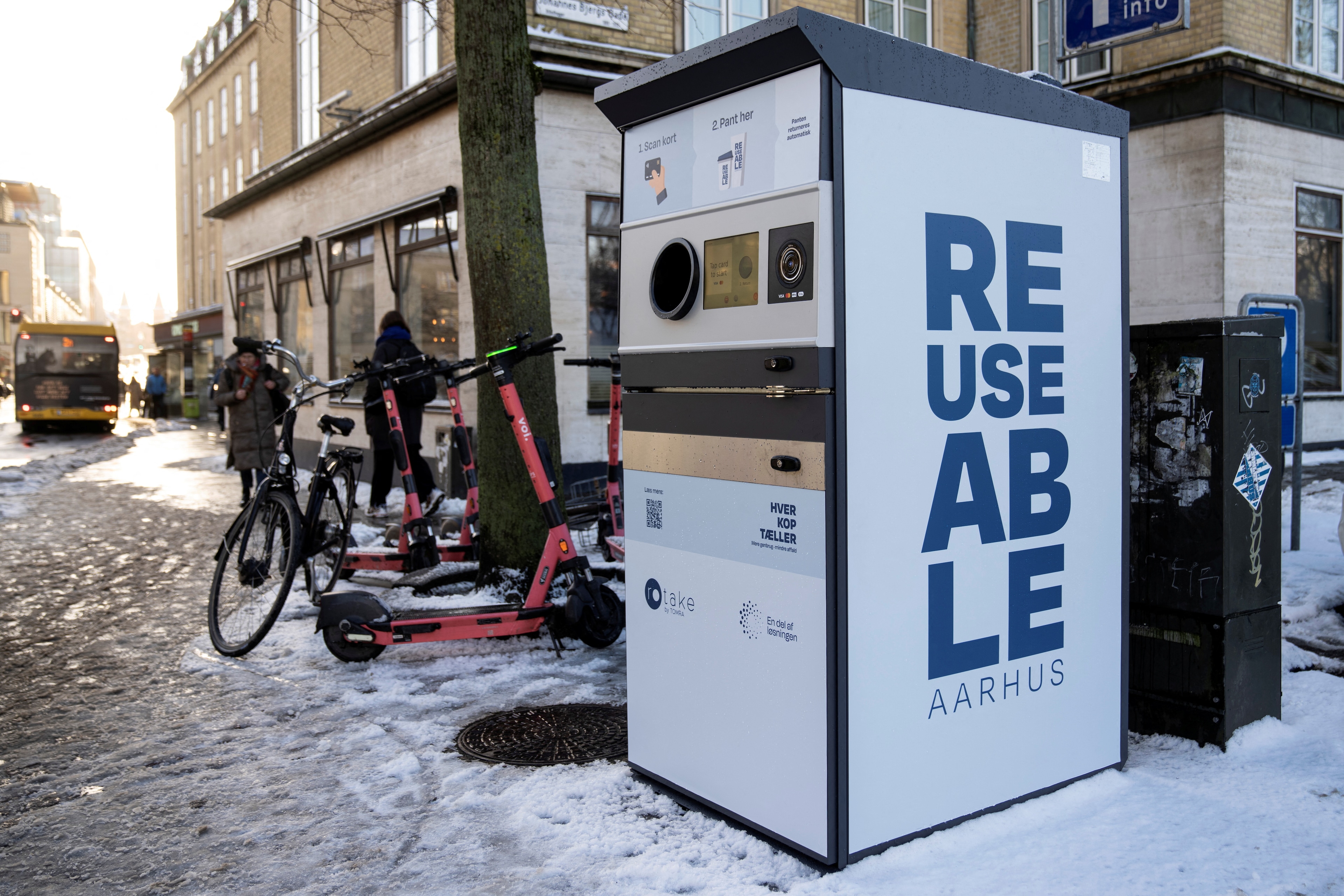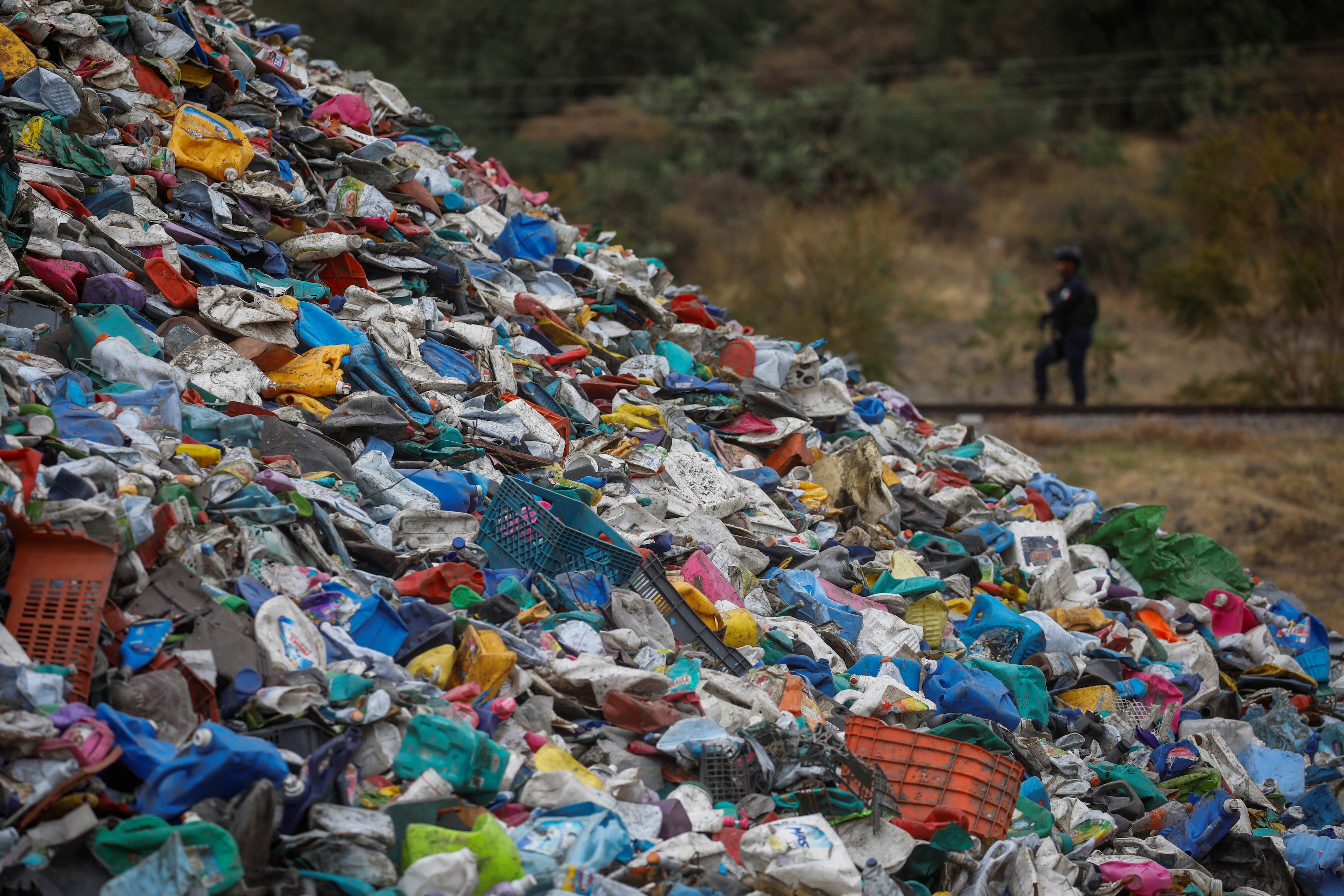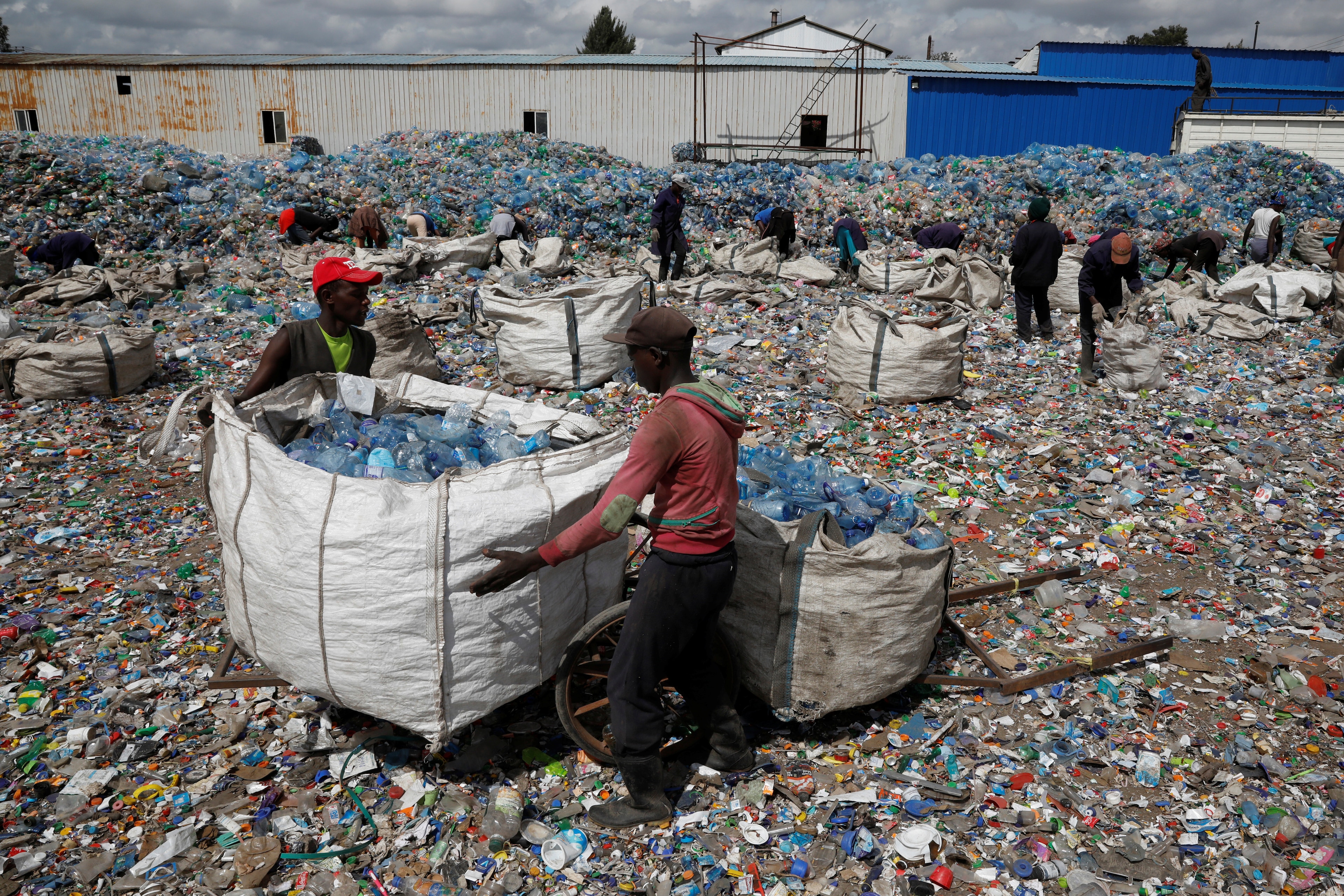5 critical actions to establish inclusive, collaborative and sustainable circular value chains

Circular value chains have social benefits and needs buy-in upstream and downstream.
Image: Getty Images/iStockphoto
- Building an effective circular value chain requires deep collaboration among diverse stakeholders, where marginalized communities are central players to ensure it is truly inclusive.
- It involves setting a clear vision for positive transformation for upstream communities and articulating the environmental and social benefits to downstream brands and customers.
- Blended funding, which includes grants and corporate social responsibility contributions, is crucial for initiating and scaling projects within the circular economy.
Transitioning linear businesses into circular ones is an urgent step towards a flourishing society and a sustainable planet. In many forums—from the World Economic Forum’s Annual Meeting in Davos, Switzerland, to local interest groups—words like “sustainable” and “collaboration” are commonly discussed.
We know we have to create new, economically viable circular models, as circularity without the economy would result in unsustainable models condemned to niche scale and impact. We also know that aiming for such systemic change requires a “collaborative” multi-stakeholder effort involving private companies, non-profit organizations and governments.
What is often ignored or only discussed in passing rather than intentionally or integratively is designing an inclusive model that addresses marginalized populations. Designing a new, circular economy model that only considers those marginalized by society as an add-on instead of being key players in the new model would only exacerbate further inequalities and injustice, eventually leading to its unsustainability and repeating the mistakes of previous models.
A recent report, Inclusive Loops: The Crucial Role of Social Enterprises in the Circular Economy, shows how to fill this gap by providing a rigorously researched and field-tested framework that ties the circular to the social economy to foster inclusivity.
Five critical actions can establish an inclusive supply chain, as our Indonesian-based bioplastic company and Schwab Foundation awardee Greenhope seeks to demonstrate.
The social enterprise sources its cassava feedstock from traditional farmer groups and converts it into renewable, less-carbon and biodegradable bioplastic products using its proprietary technology. It then supplies those to global brands.
This innovative value chain is challenging to establish because, on the upstream end, farmers’ groups typically produce output with low productivity and inconsistent quality. Meanwhile, downstream, sophisticated, demanding customers and brands seek high-volume, high-quality, cost-efficient and environmentally friendly products. Complex logistics, limited infrastructure and many other challenges lie in between.
5 critical actions for inclusive circular value chains
1. Map stakeholders and the ecosystem to design a sustainable, scalable sourcing programme
The upstream task requires us to understand the community deeply: the supporters and detractors, including how long they will be around (e.g. a new incoming village head might want to replace existing collaborators with his friends or existing projects with new ones).
The downstream task necessitates an understanding of the potential buyers and inside champions and the company’s overall direction in terms of environmental, social and governance (ESG) goals and the key supporters within. Support them with key information they need, including guidance on “how to sell the project” internally.
Sometimes, we must engage objective, third-party, non-government organizations who will validate and give credence and recognition to both the brands and farmer groups.
In Greenhope’s case, the Fair for Life certification and ISO9001 (quality), ISO14001 (environment) and ISO45001 (safety) help a lot.
2. Align the ambitions, incentives and benefits across stakeholders while managing expectations
Upstream activities require a vivid aspirational vision of positive transformation that the villages and people could experience when this collaboration is successfully sustained.
Downstream, we must clearly articulate the benefits for brands, customers, society and the environment when they use the supply chain and technology. They might also need to be sensitized to the downstream context and challenges. Arranging field visits is often fruitful.
3. Don’t be afraid to “ask” stakeholders across the value chain to change their thinking and practices
With the upstream actors, we should emphasize that there will be new ways of doing things. You can educate the farmers to “upgrade,” develop new habits, discard dated ones and do things differently and consistently while focusing on continuous quality and volume.
Ask for specific commitments, particularly during an official project launch. If necessary, incentivize by rewarding new behaviours or launching a friendly competition to embed new habits.
Similarly, with the downstream actors, new behaviours include creating joint awareness with brands that the usual purchasing process won’t be appropriate. Identifying use cases, co-creating the expanded value proposition (e.g. social impact embedded in the new green packaging) and new inclusive standard operating procedures. Support these partners in putting these metrics into their ESG report.
4. Utilize blended funding to kickstart, scale or de-risk the project
On the upstream side, startup capital expenditure for a new project can often be prohibitively expensive – this is where grant-making entities can help.
For example, Greenhope benefits from the United Nations Development Programme and from climate grants. This type of funding can function as the kickstart capital to upgrade the farmers’ machinery, provide expert training etc.
On the downstream side, we need to work with brands and customers willing to pitch in as part of their corporate social responsibility funding. Third-party programmes can also be useful.
For example, in Greenhope’s case, Fashion for Good and several other programmes were constructive in securing development costs from willing brands looking for sustainable packaging.
Accept our marketing cookies to access this content.
These cookies are currently disabled in your browser.
5. Engage and execute continuously and consistently with clear expected outcomes, milestones and roadmaps
Transformation does not arise from one-off activities. Therefore, you need to set up new rhythms and outcome-based habits with the upstream actors. Create an effective cadence and milestones based on a tangible roadmap and deliverables.
It is also important to keep downstream actors interested and engaged. Brands or customers are busy and distracted, so we must create engaging, inspiring milestones. Celebrate progress, write impact reports, press releases, etc., to generate greater engagement and partnership.
With the inclusive value chain effectively and sustainably established, we can confidently scale up the inclusive circular economy. Due to the integrative nature of the supply chain, this economy will be much more effective than any corporate social responsibility programme.
We hope the learnings above can be replicated and adapted, with greater cooperation worldwide, for a win-win circular economy with net positive social and environmental impact.
Don't miss any update on this topic
Create a free account and access your personalized content collection with our latest publications and analyses.
License and Republishing
World Economic Forum articles may be republished in accordance with the Creative Commons Attribution-NonCommercial-NoDerivatives 4.0 International Public License, and in accordance with our Terms of Use.
The views expressed in this article are those of the author alone and not the World Economic Forum.
Forum Stories newsletter
Bringing you weekly curated insights and analysis on the global issues that matter.
More on Circular EconomySee all
Kaiser Kuo and Kateryna Gordiychuk
August 15, 2025
Henrik Hvid Jensen
August 7, 2025
Pedro Gomez and Clemence Schmid
August 6, 2025
Oliver Kade and Sarah Hadley
July 28, 2025



